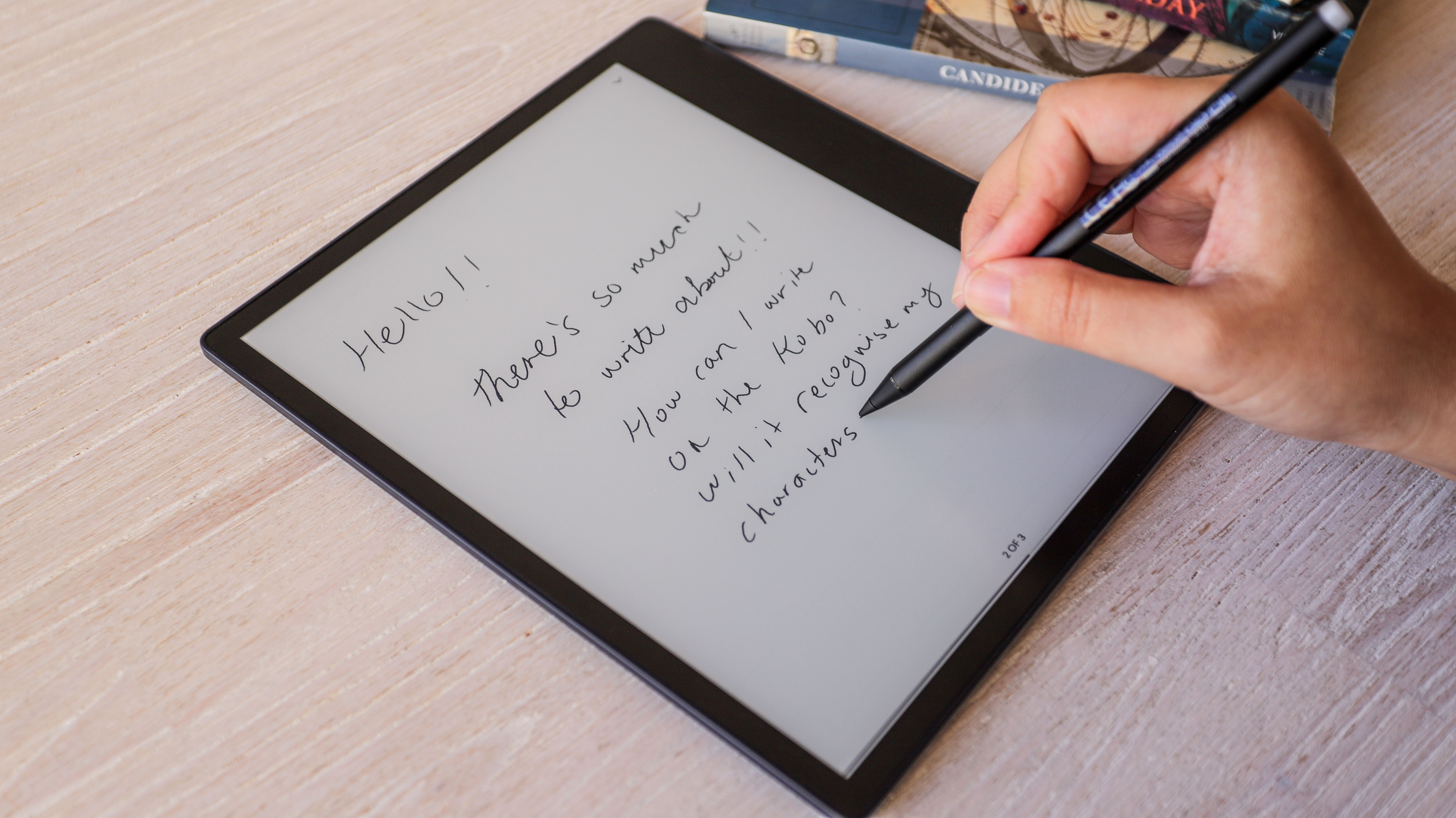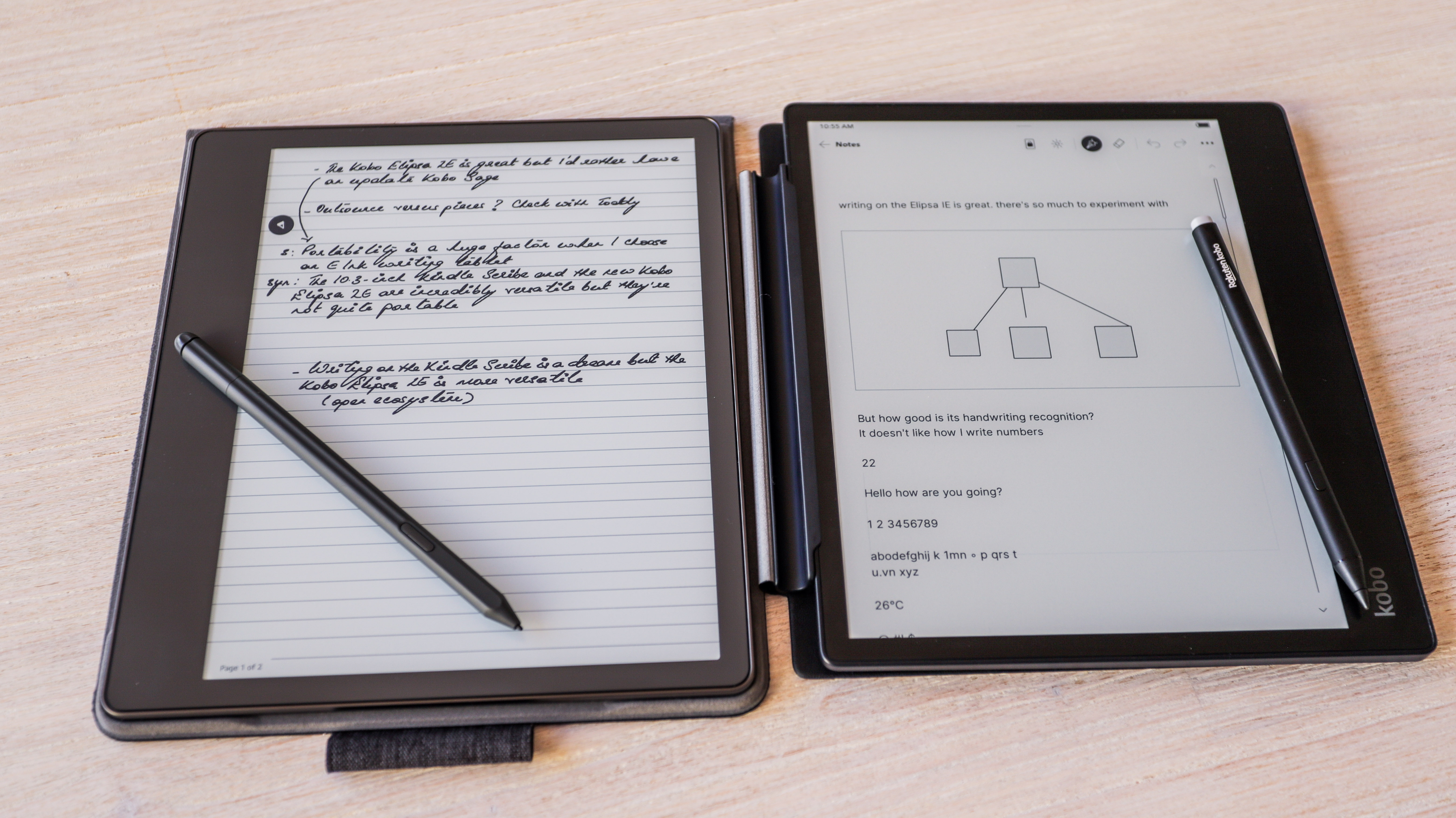I love Kobo's E Ink writing tablets, but there's one critical area where Kindle has them beat
It's a small thing, but it's key to the overall writing experience

Having tested ereaders for about seven years now, it's fair to say I've tried most models from the mainstream brands – Amazon Kindle, Kobo, reMarkable, Onyx Boox and PocketBook. These companies make some of the best ereaders and writing tablets, but I am partial to a Kobo because of the user interface and the fact that I can borrow ebooks from public libraries in Sydney, Australia (where I am based). I also have a Kobo Plus subscription.
At present, my daily e-ink device is the Kobo Elipsa 2E – I prefer the writing features over the Kindle Scribe and its interface is far more streamlined than any Onyx Boox device I've tested. It also gets me a screen light that the reMarkable 2 doesn't, so I can read in bed at night or jot down an idea at 2am without turning on the lights.
However, if you were to ask me for a recommendation for an e-paper writing tablet, I'd probably suggest anything but the Elipsa 2E for one simple reason – how the Kobo Stylus 2 feels on the screen. If Kobo can fix one little hardware bit, I dare say all the writing tablets from the Japanese-Canadian brand – the Libra Colour, the Kobo Sage and the Elipsa 2E – would become my most-recommended devices.
That little hardware bit is the stylus' tip or nib.

Softly does it
While most brands use plastic for the styli tips, the Kobo Stylus 2 has a harder point than the ones on Amazon's Basic and Premium Pens, Onyx Boox's Pen Plus, and reMarkable's Markers. The softer plastic makes gliding over the various E Ink screens of the respective writing tablets very smooth, and this is particularly true for the 2022 Kindle Scribe (we are yet to fully test the new 2024 Kindle Scribe).
The Kobo Stylus 2, on the other hand, creates a lot more friction than any other brand I've tested. It's not quite reminiscent of a pen – fountain or ballpoint – on paper because it feels like you are actually writing on a sheet of plastic. Let me be clear, though – the overall writing experience on the Elipsa 2E, the Kobo Libra Colour, even the Sage, isn't too bad; it's just that the other brands do it better.
That said, I think the harder nib might also mean there may not be as much wear and tear compared to the softer pen tips. When I initially started using the Elipsa 2E, I found the Stylus 2 tip began to show signs of wear quite quickly (within days), but it plateaued out after that and, in the year that I've been using it, it hasn't gotten any worse.
That could be because I don't apply as much pressure on pens when writing as I've seen other people do. Take my colleague's experience as an example – Philip uses the reMarkable 2 for notes and "burns through the plastic pen nubs [sic] quicker than expected". So he turned to third-party titanium alternatives which, unfortunately, ended up being a "pen-destroying mistake". I have another friend who wore through the reMarkable's Marker Plus tip in about two months, nearly flattening it! This might sound like a reMarkable thing, but I have seen similar conditions on Kindle Scribe Pens.

The pen is mightier
Kobo is no stranger to redesigning its digital pen. The first iteration of the Kobo Stylus was a AAAA battery-powered pen, which meant it was a little on the heavy side. Moreover, most people would likely have a spare AA or AAA battery lying around, not necessarily a AAAA. So not only did you need to take into consideration the ongoing cost of nib replacement, but also the battery.
This older pen didn't feature an eraser on the top, but had a button on the side (or is that 'length' on a cylindrical object?) close to where the thumb would be. It also had a second button close to it for using as a highlighter.
The Kobo Stylus 2, which debuted with the Elipsa 2E in April 2023, was a significant improvement over its predecessor. Gone is the battery; instead a USB-C port helps keep it topped up, so it's both lighter and a wee bit thinner in comparison. There's an eraser at the top of the Stylus 2, so it features just one button for highlighting. I also love the touch of white on the eraser – it adds a little something to the design aesthetic I think.
If Kobo is still keen on innovations, the one change I'd really like to see is a softer nib for a potential Stylus 3 that offers a smoother writing experience. Although I hope it doesn't come at the cost of needing to replace it often.
You might also like...
Get daily insight, inspiration and deals in your inbox
Sign up for breaking news, reviews, opinion, top tech deals, and more.

While she's happiest with a camera in her hand, Sharmishta's main priority is being TechRadar's APAC Managing Editor, looking after the day-to-day functioning of the Australian, New Zealand and Singapore editions of the site, steering everything from news and reviews to ecommerce content like deals and coupon codes. While she loves reviewing cameras and lenses when she can, she's also an avid reader and has become quite the expert on ereaders and E Ink writing tablets, having appeared on Singaporean radio to talk about these underrated devices. Other than her duties at TechRadar, she's also the Managing Editor of the Australian edition of Digital Camera World, and writes for Tom's Guide and T3.